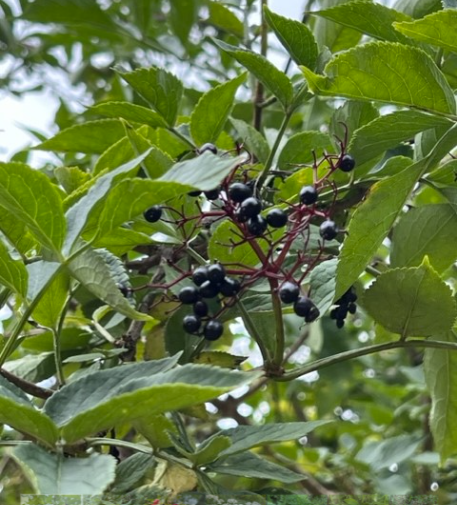The Roadside Pharmacy
If there was one good thing to come out of COVID lockdown it was our sudden desire to reconnect with nature. The simple joy of a slower pace and our government mandated daily exercise outside lifted our otherwise dampened spirits. And it was our reconnection with nature that saw an explosion of interest in not only what nature showed us but also in what nature could provide us.
Blogs, Facebook pages and books on foraging sprung up quicker than a patch of roadside nettles and in tandem, it seems, we had also begun to rediscover the ways of a bygone age, which in the Middle Ages would probably have seen us burnt at the stake.
So, with my
witches' cloak buttoned and my scientific hat firmly on, let me take you on a
brief journey through your roadside verge.
Stinging Nettles, Urtica Dioica
Reviewing the research on this ubiquitous plant you could be forgiven for thinking these have a superpower. Documented by Hippocrates and the Ancient Egyptians as joint pain relief, its anti-inflammatory properties can be used to relieve osteoarthritis.
A study reports that in radomised control trials, osteoarthritis patients were given 50g of stewed nettles with 50g of the anti-inflammatory drug diclofenac and it was shown to be as effective as 200mg of diclofenac. Now this trial only had 37 patients and was only conducted over a 2-week period but if this and other reported studies are reliable then this could help us reduce our intake of NASID’s. The only issue we have is that Big Pharma want you to rely on their drugs, they can’t make money out of a roadside weed.
Yarrow. Achillea millefolium.
Hawthorn, Crataegus monogyna.
Ribwort plantain, Plantago lanceolata.
Elder, Sambucus Nigra
In the early days of COVID I read a scientific
journal entitled,
“Medicinal plants to strengthen immunity during a pandemic” Amongst several other plants cited, this
sentence ‘Elderberry is the most effective means of preventing or combating
coronavirus infections at an early stage’ sent me running to the hedgerow
around my garden where they grow only to find not a single berry, so I stocked
up on elderberry liquid supplements but had there been any on the trees I would
have picked them and made my own syrup. It is a versatile plant, as well as its
berries being documented as an immunity booster for all those nasty winter
ailments, its leaves can be made into an ointment to ease bruises, sprains and
chilblains and elderflowers can be seeped into a tea to reduce symptoms of
fever. You can also make wine and chocolate with the berries, so what’s not to
love?
There are so many more plants like these around our hedgerows and even in your back garden and all these plants are prolific in the UK, but sadly are largely considered a nuisance, regularly subjected to the hedge cutter or weed killer, but hedgerows and roadside verges are an incredibly important feature as a food source and habitat for myriad wildlife species , and its benefit as a source of food and medicine for humans just adds to the reason why we need to learn to learn to love and protect them.
If I have inspired you to take a delve deeper into this fascinating subject, look out for my posts on how to use these plants. If you want to add to your learning, please see my recommended reading list post and my digital newspaper. And if, like me, you want to know the science stuff, see my Science reference list post.






Amazing information. Had no idea about the Hawthorn.
ReplyDelete